
http://www.sandersresearch.com/index.php?option=com_content&task=view&id=1179
Curious Coincidences of 2001 Print
By William Bergman
Apr/05/2007
[Given the recent increased interest in publications from www.sandersresearch.com, we will begin republishing the occasional piece from the archives. The following, first published in December 2005, is the first.] Hamilton, Bush & Kean
Former FBI Director Louis Freeh took leaders of the former 9/11 commission to the woodshed in a recent opinion piece in the Wall Street Journal . Freeh criticized Thomas Kean and Lee Hamilton, former Chair and Vice Chair, respectively, of the 9/11 commission, regarding the Defense Department’s “Able Danger” project.
According to Freeh, Able Danger had concluded that military personnel had identified Mohamed Atta as an al Qaeda agent operating in the U.S. at least by early 2000. This revelation arrived in August 2005, over a year after the 9/11 commission published its final report.
In that report,[2] the commission did not mention Able Danger, and concluded that the alleged lead hijacker Atta had not been identified prior to the attacks. After the Able Danger reports came out a year later, however, one group of victim family members, the September 11 Advocates, issued a statement that said they were “horrified” to learn of this information, especially as it was not included in the 9/11 commission report.
In an August 12, 2005 statement, Kean and Hamilton responded to the new revelations and resulting heated questions. They asserted, among other contested rationale, that the Able Danger project “did not turn out to be historically significant, set against the larger context of U.S. policy and intelligence efforts that involved Bin Ladin and al Qaeda.”[3]
In his November 17, 2005 Wall Street Journal article, Freeh sharply criticized Kean and Hamilton. He stated that the commission’s failure to adequately investigate Able Danger “raises serious challenges with respect to the commission’s credibility and, if the facts prove out, might just render the commission historically insignificant itself.” In turn, Freeh offered a number of compelling reasons for pursuing a fresh investigation into unknowns about Able Danger.
Mindy KleinbergFreeh has not been alone. Less than a week after Kean and Hamilton released their August 12, 2005 statement, leaders of the September 11th Advocates responded. This statement[4] criticized Kean and Hamilton in fairly blistering language, particularly with respect to the description of Able Danger as not "historically significant." In an interview, Mindy Kleinberg -- whose husband died in the World Trade Center -- stated, "They somehow made a determination that this was not important enough. To me, that says somebody there is not using good judgment. And if I'm questioning the judgment of this one case, what other things might they have missed?"[5] Kleinberg’s question was joined by similar observations by many, including Rep. Christopher Shays of Connecticut, who was quoted “If this wasn’t reported by the commission, what else wasn’t reported?”[6]
Some other “insignificant” things
Here is one way to try to identify similarly significant but under-reported issues. If having former members of the 9/11 commission call things “not … historically significant” suggests serious issues may be under the rug, where else has the 9/11 commission applied this dismissive language?
A word search on the 585-page final report of the 9/11 commission produces nothing else, strictly speaking, described as “not historically significant” or “historically insignificant.” However, the commission applied quite similar language in one other material instance. On p. 172 of the final report, after discussing money laundering issues, the commission concluded, "To date, the U.S. government has not been able to determine the origin of the money used for the 9/11 attacks. Ultimately, the question is of little practical significance."
This rather ridiculous statement suggests that some of the biggest bones may be buried in the financial area. Examples include wire transfers from Pakistan to Mohamed Atta in Florida bank accounts in mid-2001, a spike in U.S. currency growth in July and August 2001, suspicious activity reporting by financial institutions in July and August 2001, and the commission’s misleading description of the emphasis on counterterrorism in anti-money laundering initiatives.
Wire transfers to Mohamed Atta
As early as October 2001, government investigative work and media reports publicly suggested that Mohamed Atta had been receiving wire transfers in bank accounts in Florida in the year before 9/11.[7] Some of those transfers were reported to have been arranged by people linked to Pakistani intelligence services as well as al-Qaeda.
One of those reportedly[8] involved in making the transfers left his position as Director of the Pakistani intelligence service soon after September 11. This person happened to be visiting Washington the week before 9/11, and was having breakfast with leaders of the Senate and House Intelligence Committees on the very morning of 9/11 – leaders of the subsequent Congressional Joint Inquiry into the events of September 11.
A complete discussion of what we know about these transfers, whether these transfers were or were not made, and if they were, who arranged them and how, would seem to be a critical element of any full and complete investigation.[9] Yet, amazingly, and yet, perhaps not so amazingly, they went unmentioned in the 9/11 commission’s final report.
Currency Growth 2001
In saying that the origin of the money used for the 9/11 attacks was of “little practical significance,” the commission asserted that al Qaeda could have easily tapped other funding sources. In the case of these possible wire transfers, this seems to be a bit like saying that the identity of the person who may have paid to help a murderer take a plane to go kill people is not practically significant, given that the murderer could have found other people willing to pay for the flight.
The wire transfers to Atta were received in bank accounts in Florida. A second money issue undiscussed by the 9/11 commission may also have connections to Florida, among other places.
Rapid currency growth in July/August 2001
The stock of U.S. currency circulating outside banks rose especially rapidly in July and August 2001. In fact, the increase from June to August 2001 was the largest such June-August increase in the currency component of M1 since 1947, the first year for which this data is reported by the Federal Reserve.[10] The August increase alone was the third largest single monthly increase since 1947, trailing only December 1999 (with pre-Y2K concern as well as terrorism threats) and January 1991 (the onset of US military action in Iraq, and an important enforcement month in the BCCI money laundering scandal). The dollar amounts are significant, at least to the Average Joe. The above-average growth in currency in July and August 2001 totaled over $5 billion.[11]
Why might currency circulating outside of banks have risen so sharply in July and August 2001? A bird in the hand, the saying goes, is worth two in the bush. Under money laundering and other laws, including those applied in a time of war or a declared national emergency, assets in the banking system can be frozen and seized. The implied incentives help explain a related phenomenon called “wartime hoarding.” Historically, in wartime, currency in circulation outside of banks has tended to rise relative to other forms of money like bank deposits.
In part due to efforts of the 9/11 commission, we now have a greater appreciation of the extensive intelligence warnings that arose (quietly, from the public’s point of view) in mid-2001. The spike in currency growth in July and August may have arisen as anyone mindful that their financial assets might be seized or otherwise at risk after the attacks converted their bank accounts to a more liquid asset before the attacks.
Was “wartime hoarding” at work right before 9/11? The conversion of bank accounts into currency could have been responsible for the surge in currency in July and August 2001.
As noted above, the final report of the 9/11 commission stated that the origins of the money used to fund the attacks were “ultimately … of little practical significance.” Certainly, the alleged 9/11 hijackers did not need a great deal of money to carry out their mission. But tracking financial activity could still provide evidence useful to help understand and prosecute the crimes.
Focusing on transactions directly involving 19 alleged hijackers misses the forest for the trees. The surge in currency in July and August 2001 may have arisen in accounts for people related to a broader conspiracy. Investigating that broader money flow could yield important findings. For example, when the currency was ordered for shipment, was it ordered in advance of 9/11 by people with knowledge attacks were imminent? Yet the final report of the 9/11 commission makes no mention of the extraordinary growth in currency in circulation in July and August 2001, nor any related investigative efforts.
Why might this issue be particularly important, as touched on above, in light of the fact that Atta was reported to have received wire transfers in a bank account in Florida? A flowering scandal involving one of the owners of a fleet of casino boats in Florida may provide an important investigatory avenue.[12] Atta was reportedly aboard one of those boats soon before 9/11.[13] Was he just gambling? Were casino boats, financial institutions, aviation companies, or other parties in Florida involved in extraordinary currency shipments just prior to, or soon after, 9/11? Atta’s alleged appearance on a casino boat -- or any investigation of that appearance and its implications -- goes unmentioned in the 9/11 commission’s final report.
This leads to another topic unmentioned in the 9/11 commission’s final report. Atta was reported to have visited not only casino boats, but also Las Vegas, in the weeks before 9/11. Casinos, like casino boats, have a lot of currency. Their operation provides the means for distributing currency. The final report of the 9/11 commission did describe the timing of Atta’s visits in Las Vegas, but the word “casino” is not to be found.
Nor does the final report draw any connection between the existence of substantial amounts of currency in Las Vegas and the fact that several extraordinary airplane flights left soon after 9/11, including some from Florida and at least two from Las Vegas. These flights carried relatives of Osama bin Laden, as well as other people from Saudi Arabia said to be concerned for their safety.[14] One of the controversial flights that left soon after 9/11 reportedly included a bank CEO. Another passenger of interest was the former head of Saudi intelligence, who had left his post in August 2001.[15]
Did anyone check the luggage?
Were large amounts of currency being shipped in other ways for these passengers, or people related to them? More generally, how much currency moving after 9/11 was originally shipped in July and August, when we saw the surge in currency circulating outside of banks?
President George W. Bush first signed an executive order freezing bank accounts relating to 9/11 on September 24, 2001. All but one of the above-noted controversial flights were gone before September 24, however, while one of them left that day. Even if they left without substantial sums of currency aboard, and even if the people on the planes were not directly connected, similar efforts to transport currency may have been pursued in July, August and early September, as well.
Further south, banking conditions were deteriorating in Argentina. This may provide a less sinister reason for the surge in currency in July and August 2001. Yet a downdraft in U.S. dollar-denominated deposits in Argentina may itself have been related, at least partially, to 9/11. Large depositors concerned that their savings might be frozen may have been trying to withdraw currency in Argentina, as well.
Suspicious activity reporting
Some of the tools used to monitor possible money laundering abuses and to investigate crimes after they occur include “suspicious activity reports.” They used to be called “criminal referrals,” and are normally prepared when banks and other financial institutions are required by law and regulation to report transactions relating to suspected criminal activity.
On August 2, 2001, at a time when intelligence warnings of impending terrorist attacks were intensifying and currency growth was spiking higher, the Federal Reserve Board of Governors issued a non-routine supervisory letter to the Federal Reserve Banks.[16]
This letter stated that the importance of monitoring suspicious activity reports had long been recognized by the Federal Reserve, and then emphasized that it was important that the Reserve Banks continue to do so. The letter did not explain why it was issued when it was issued, given that this was a need that had long been recognized.
Intelligence warnings on terrorism were rising significantly in mid-2001, and with terrorism and its financing already recognized as an important element of the national money laundering strategy (see below), a plausible question arises whether the August 2, 2001 supervisory letter was related to these warnings. We didn’t learn until early 2005, for example, that the FAA had received numerous warnings of a terrorist threat during mid-2001.[17]
The August 2, 2001 date might be especially coincidental. In Forbidden Truth, authors Jean-Charles Brisard and Guillaume Dasquie report that negotiations between the Taliban and representatives of the United States over energy production issues in Afghanistan ended on August 2, 2001. Four days later, President Bush received a “PDB” – a Presidential Daily Brief – with a headline warning that bin Laden was “determined to strike in US,” and the body text of the PDB referred to “patterns of suspicious activity.”
If intelligence warnings prompted the Federal Reserve to issue the August 2, 2001 supervisory letter, how well and how quickly was that intelligence incorporated into any investigation into the surge in currency growth in July/August 2001? Federal Reserve banks, for that matter, ship currency to banks, who move it in turn into public circulation. The August 2 letter may not have been related to terrorism intelligence warnings, of course, but we have no evidence that the issue was explored by the 9/11 commission.
The final report of the 9/11 commission also makes no mention of a spike in suspicious activity reports in July and August 2001. The chart below shows the number of suspicious activity reports filed in the U.S. from 1997 to 2001; the line at the top is for January through August, 2001.[18]
The final report of the 9/11 commission does state (in a footnote) that no financial institution filed a suspicious activity report regarding a transaction of any of the 19 people that the report identified as hijackers. This statement is repeated in the staff monograph on terrorist financing that followed one month after the final report.[19] However, as noted above, the transactions of 19 people can miss the forest for the trees. The report does not state whether any suspicious activity reports relating to terrorism, period, were filed in the months before 9/11, or whether the commission even looked into it. Maybe they didn’t.
Money laundering initiatives related to terrorism
The final report of the 9/11 commission provides a vivid description of intelligence warnings rising in the months before September 11.[20] However, the most meaningful relevant reference to money laundering in this regard is true only in a very narrow sense.
Every year since 1999, the U.S. government has issued a national money laundering strategy report, as required by law. On page 186 of its final report, the 9/11 commission stated that the Treasury Department did not consider terrorist financing important enough to mention in the national money laundering strategy report before September 11.
The national money laundering strategy report for 2001 was dated September 12, 2001, so this statement may be true in a very narrow sense. That 2001 report did deal with terrorism as an important topic,[21] however, even though it did not refer to the events of September 11. More importantly, the Treasury Department’s national money laundering strategy reports for 1999[22] and 2000[23] stressed terrorism and its financing, directly and prominently, as an important end to which anti-money laundering efforts (including suspicious activity reporting and analysis) were to be directed.
Also in the late 1990s the Financial Action Task Force (the FATF, where the United States is significantly represented) repeatedly stressed terrorism threats in its international guidance. In turn, the U.S. Financial Crimes Enforcement Network’s “Suspicious Activity Report Review” dated June 2001 described a late-2000 FATF “Typologies Exercise,” where the major issues examined included terrorist financing as well as the role of cash vs. other payment methods in money laundering schemes.[24]
In mid-2001, terrorism was a known object of anti-money laundering efforts. Yet the commission erred considerably in its assertions about the importance of terrorism in the national money laundering strategy, among other areas. Why?
Conclusion
In their August 12, 2005 statement dismissing Able Danger as “not … historically significant,” former 9/11 commission chairs Kean and Hamilton echoed their final report of a year earlier, which stated that
"To date, the U.S. government has not been able to determine the origin of the money used for the 9/11 attacks. Ultimately, the question is of little practical significance."
Amidst speculation that classified projects related to and possibly including Able Danger were tracking financial transactions, the coincidence may be more than coincidental.[25]
Under-explored financial issues relating to 9/11 appear to be part of a broader, significant problem. The 585-page final report of the 9/11 commission is extensively footnoted and superficially impressive. Many people worked long and hard on it. However, in a statement following the Able Danger revelations several months ago, members of the September 11th Advocates (the above-noted victim families group) aptly described the report as a “hollow failure.”[26] Unanswered questions pointing to serious issues abound, and in a variety of areas.[27]
More recently, members of the former 9/11 commission issued a ‘report card’ on the performance of the government in enacting their recommendations. The fact that the only A issued (out of 41 graded areas) was in the area of terrorist financing could be another clue that big bones are buried in this area. Putting the value of their recommendations aside, it is worth recalling that dismal report cards have been issued on the 9/11 commission itself, notably by the Family Steering Committee.[28]
Congress should heed the call of 9/11 family leaders and others and hold hearings on the Able Danger project, with the leaders of that project enabled to testify as part of a broader, thorough and urgent inquiry. The structure of such an inquiry is critical, as one of the topics should be the performance of the “independent, bipartisan” 9/11 commission itself, a product of the Congress as well as the President.
[1] Louis Freeh, “An Incomplete Investigation,” Wall Street Journal , 11/17/05.
[2] National Commission on Terrorist Attacks Upon the United States, The 9/11 Commission Report .
[3] See http://www.9-11pdp.org/press/2005-08-12_pr.pdf .
[4] See http://www.911citizenswatch.org/modules.php?op=modload&
name=News&file=article&sid=635
[5] See Ian Bishop, “Angry Kin Call For a New Panel on 9/11,” New York Post, August 18 2005
[6] Quote in CQ Weekly , August 12, 2005.
[7] See Gary Fields and David S. Cloud, “At Least Six Hijacking Suspects Got U.S. Visas in Saudi Arabia …” Wall Street Journal , October 9, 2001.
[8] See Michel Chosuddovsky, “The 9/11 Joint Inquiry Chairman are in Conflict of Interest,” Online Journal , August 7 2003, and Dave Williams, “Porter Goss, the New CIA Head, Linked to Funding 911 Terror Attacks.” Melbourne Indymedia , August 13 2004.
[9] A notable effort appears in Nafeez Ahmed, The War on Truth , Interlink Books, pp. 137-53.
[10] In addition to the currency component of M1, the Federal Reserve also reports a statistic called “currency in circulation,” which includes currency in bank vaults. However, many sources -- including the Federal Reserve’s own “Purposes and Functions” handbook, the Federal Reserve Bank of New York’s “Fedpoints,” and the website for the cash services area of the Federal Reserve – refer to the currency component of M1 (which excludes currency in bank vaults) as “currency in circulation.” A careful effort that distinguishes the currency component of M1 from “currency in circulation” is in Richard D. Porter and Ruth A. Judson, “The Location of U.S. Currency: How Much is Abroad?” Federal Reserve Bulletin , October 1996.
[11] For the data, see the St. Louis Fed “FRED” database, the currency component of M1, at
http://research.stlouisfed.org/fred2/series/CURRSL/24 .
[12] See James V. Grimaldi and Susan Schmidt, “Lawmaker’s Abramoff Ties Investigated,” Washington Post , October 18 2005; Susan Schmidt and James V. Grimaldi, “Witness May Have Pivotal Role in Probe of Alleged Corruption,” Washington Post , November 20 2005, and Susan Schmidt and James V. Grimaldi, “Lawmakers Under Scrutiny in Probe of Lobbyist,” Washington Post , November 26, 2005.
[13] Vickie Chachere, “SunCruz Casinos Turns Over Documents in Terrorist Probe,” Florida Times-Union , September 26 2001; The Complete 9/11 Timeline, “September 5, 2001: Hijackers Go on Gambling Cruise in Florida,” Center for Cooperative Research. See also Daniel Hopsicker, “Hammer To the Slammer,” MadCowMorningNews, September 30 2005.
[14] See Dana Milbank, “Plane Carried 13 Bin Ladens,” Washington Post, July 22 2004; Craig Unger, House of Bush, House of Saud , Scribner, 2004.
[15] See Margie Burns, “Why Were Saudi Passengers Flown Out of the Country After 9-11?” Baltimore Chronicle , April 9 2004.
[16] See http://www.federalreserve.gov/boarddocs/srletters/2001/sr0118.htm .
[17] See AP report at www.washingtonpost.com/wp-dyn/articles/A13203-2005Feb10.html .
[18] FinCEN SAR Activity Review, By The Numbers, May 2004, http://www.fincen.gov/sec1filingsarissue2.xls .
[19] National Commission on Terrorist Attacks Upon the United States, “Monograph on Terrorist Financing,” p. 141.
[20] See e.g. Chapter 8, “The System Was Blinking Red.”
[21] See http://www.treas.gov/press/releases/reports/ml2001.pdf ,
and do a word search on “terror.”
[22] http://www.treas.gov/press/releases/reports/money.pdf ,
[23] http://www.ustreas.gov/press/releases/docs/ml2000.pdf
[24] FinCEN, “SAR Activity Review,” June 2001.
[25] In a recent interview, Gen. Hugh Shelton described the origins of the Able Danger program, including a note that the program was aimed ‘to see if there was any way that we could track down Osama bin Laden or where he was getting his money from or anything of that nature.’ See James Rosen, “Able Danger Saga Stirs New 9/11 Claims,” McClatchy Newspapers, 12/5/05.
[26] See their August 10, 2005 statement at the following link : www.911citizenswatch.org/modules.php?op=modload&name=News&file=article&sid=619.
[27] See e.g. www.justicefor911.org/Appendix4_FSCQuestionRatings_111904.php .
[28] See http://www.justicefor911.org/Appendix4_FSCQuestionRatings_111904.php .


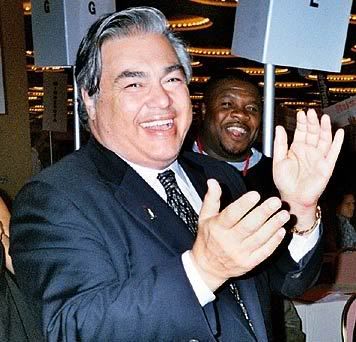
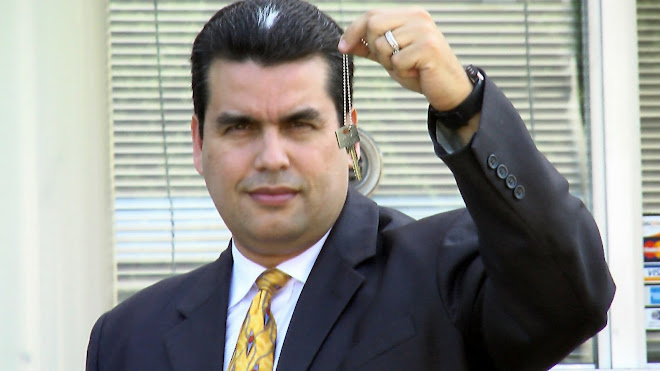


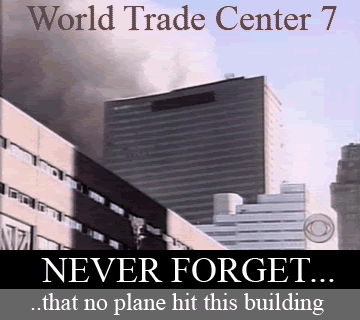
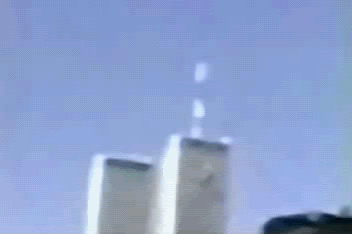

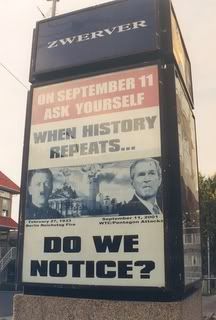




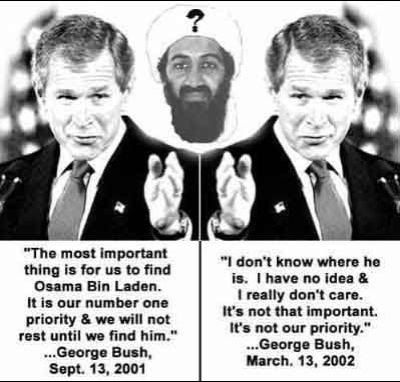

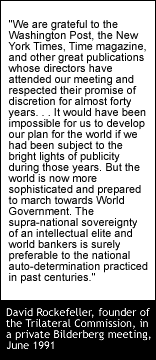


No comments:
Post a Comment